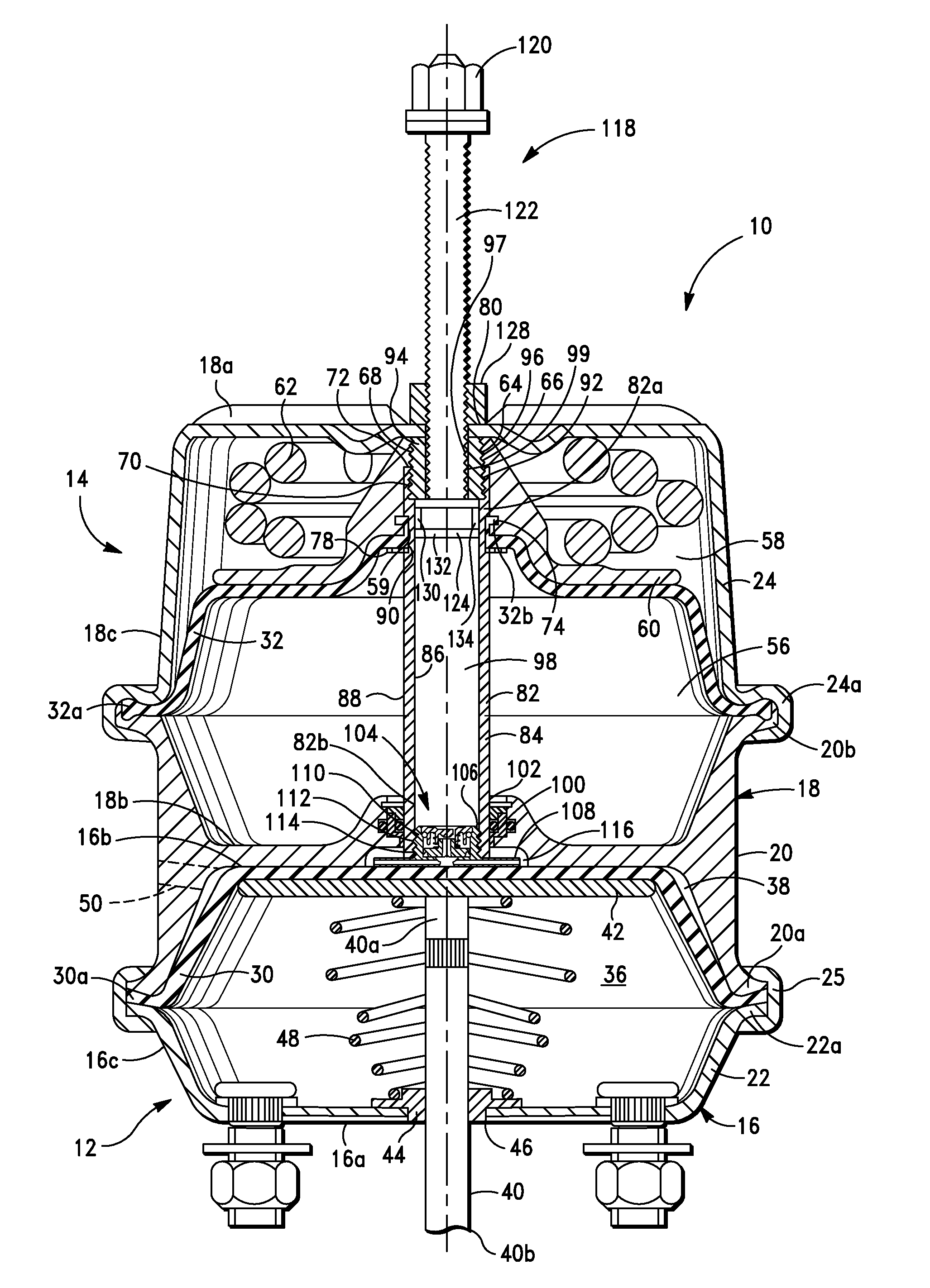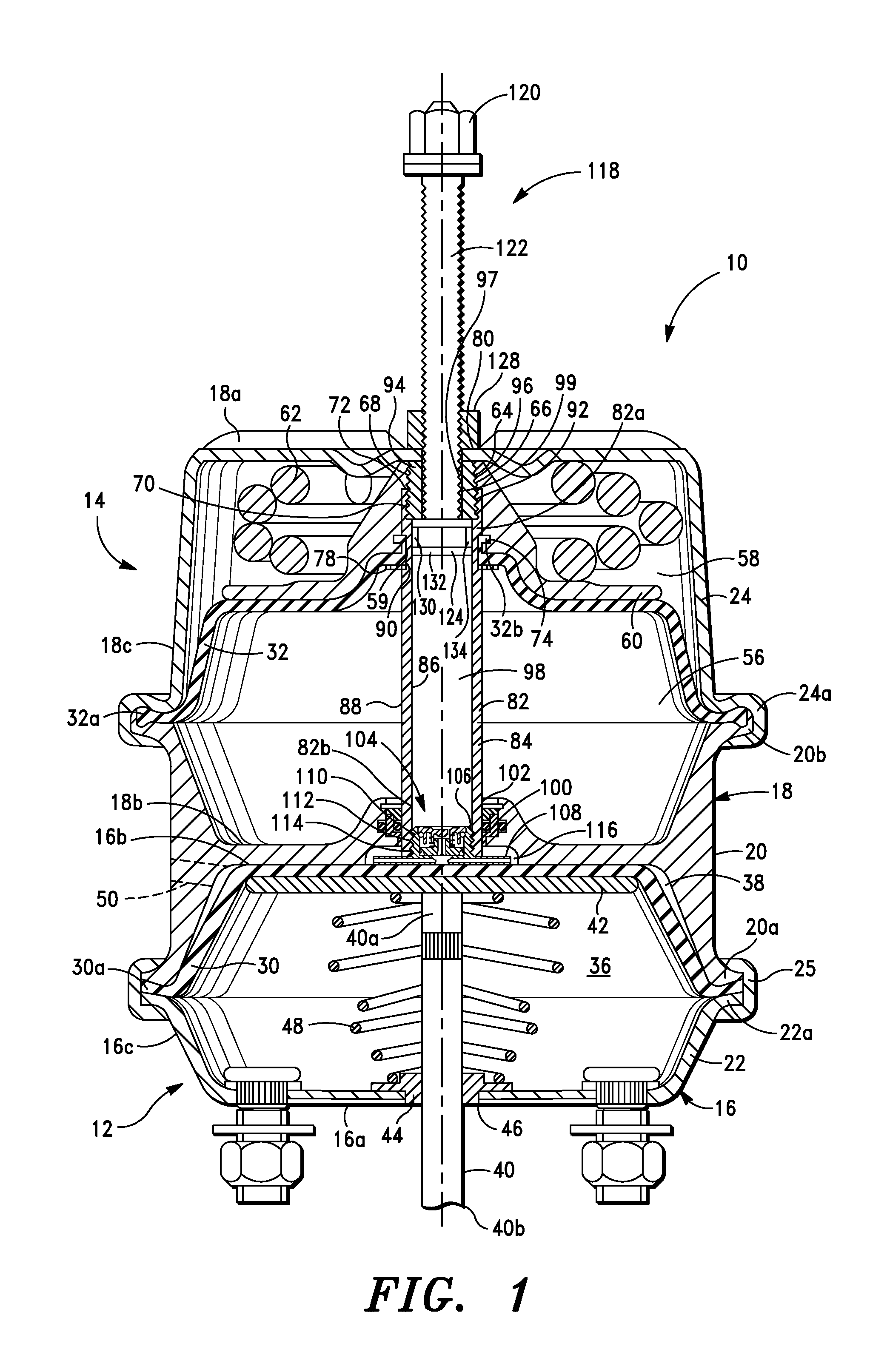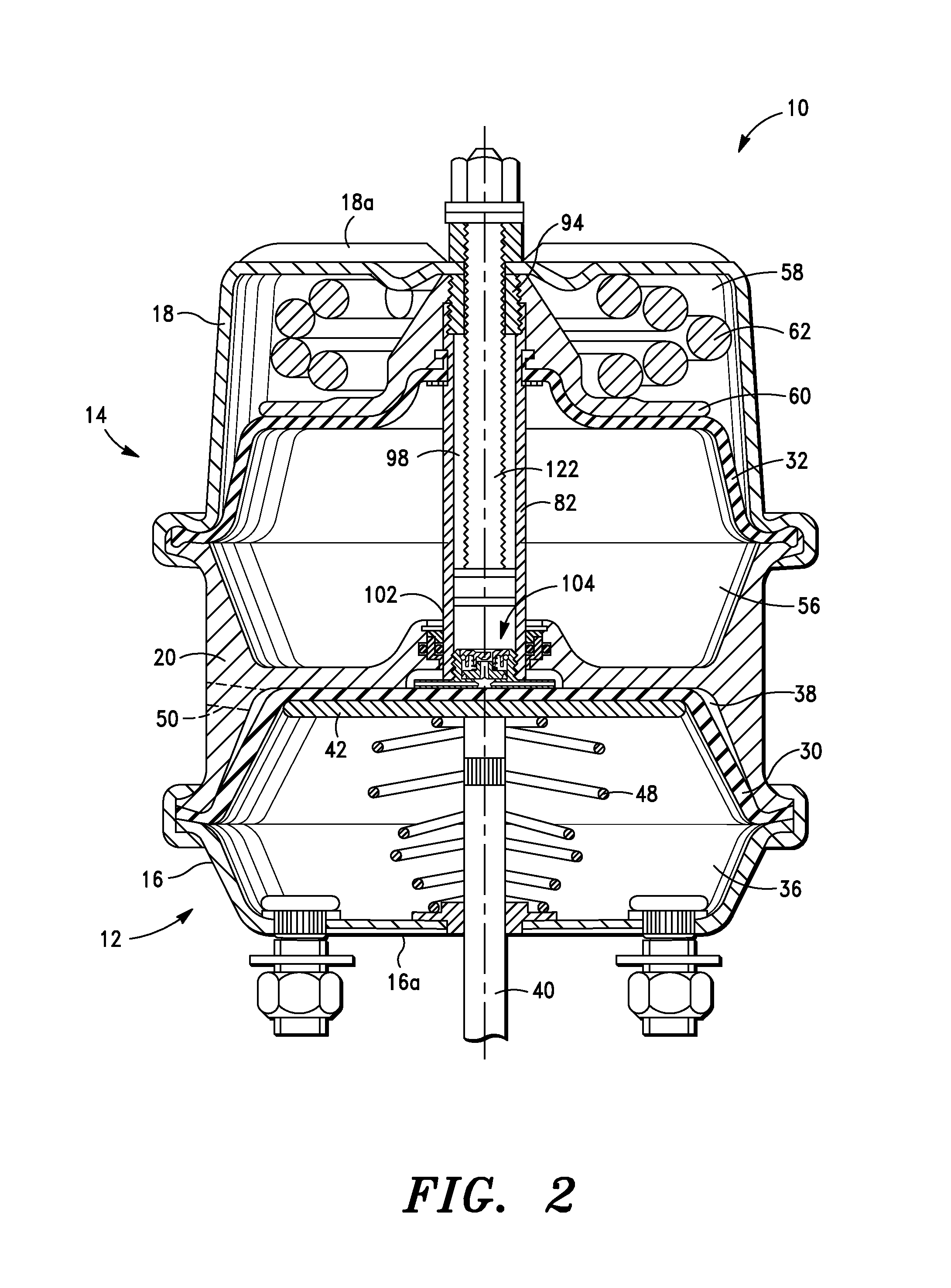Pneumatic brake actuator with flow insensitive two way control valve
a two-way control valve and pneumatic brake technology, which is applied in the direction of braking systems, machines/engines, braking components, etc., can solve the problems of high undesirable pressure build-up in the spring chamber upon the release of the brake, increased pressure in the spring chamber, and exacerbated undesirable effects of pressure build-up in the spring chamber. , to achieve the effect of preventing direct exposure and preventing pressure build-up
- Summary
- Abstract
- Description
- Claims
- Application Information
AI Technical Summary
Benefits of technology
Problems solved by technology
Method used
Image
Examples
Embodiment Construction
[0058]FIGS. 1-4 show a tandem-type pneumatic brake actuator 10 comprising a service brake actuator 12 in combination with a spring brake actuator 14. The service brake actuator 12 applies and releases the service or operating brakes of a vehicle. The spring brake actuator 14 is used to apply the emergency or parking brakes of the vehicle.
[0059]The service brake actuator 12 includes a housing 16 having first and second end walls 16a and 16b and a side wall 16c that is joined with and extends between the end walls 16a and 16b. The spring brake actuator 14 includes a sealed housing 18 having first and second end walls 18a and 18b and a side wall 18c that is joined with and extends between the end walls 18a and 18b. The housings 16 and 18 are formed by an adapter housing 20 that is coupled with a service brake cover 22 and a spring brake cover 24. The adapter housing 20 and spring brake cover 22 have mating flanges 20a and 22a, respectively, that are clamped together with a clamp 25 to ...
PUM
 Login to View More
Login to View More Abstract
Description
Claims
Application Information
 Login to View More
Login to View More - R&D
- Intellectual Property
- Life Sciences
- Materials
- Tech Scout
- Unparalleled Data Quality
- Higher Quality Content
- 60% Fewer Hallucinations
Browse by: Latest US Patents, China's latest patents, Technical Efficacy Thesaurus, Application Domain, Technology Topic, Popular Technical Reports.
© 2025 PatSnap. All rights reserved.Legal|Privacy policy|Modern Slavery Act Transparency Statement|Sitemap|About US| Contact US: help@patsnap.com



